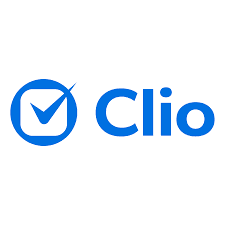In the labyrinth of today’s digital workspace, where documents weave the very fabric of our daily tasks, the quest for the ultimate document management tool becomes not just a necessity but a mission. On one side of the arena, we have SharePoint, Microsoft’s behemoth, known for its robust capabilities and enterprise-level prowess. On the opposite side stands Clio, a sleek, specialized contender, designed with legal professionals in mind, offering features that streamline case management and document handling. But when the chips are down, which platform will champion your organization’s needs? Let’s dive into this head-to-head battle, starting with an essential aspect: Integration Capabilities.
SharePoint | Clio |
|---|---|
| G2 Score – 4 out of 5 stars | G2 Score – 4.6 out of 5 stars |
| TrustRadius Score – 7.9/10 | TrustRadius Score – 7/10 |
Integration Capabilities: The Sinews of Seamless Workflows
In today’s interconnected digital world, a document management system’s power is significantly measured by its ability to play well with others. Here’s how SharePoint and Clio fare in the realm of integration.
SharePoint: The Broad-Spectrum Integrator
SharePoint, under the Microsoft umbrella, flaunts its integration muscle with the Office 365 suite, ensuring a seamless flow between document creation, management, and collaboration. Its expansive API opens the door to a myriad of third-party applications, allowing organizations to tailor a comprehensive digital ecosystem that caters to diverse operational needs. From email to project management tools, SharePoint bends and flexes to accommodate a wide array of software, making it a versatile ally in the digital workspace.
SharePoint’s vast integration capabilities come with their own set of complexities. Fully harnessing its power often requires a deep dive into custom configurations and may demand IT prowess, potentially putting smaller organizations or those with limited technical resources at a disadvantage.
Clio: The Specialist with Focus
Clio, designed with legal professionals in mind, offers targeted integrations that resonate deeply with the legal ecosystem. It seamlessly connects with apps critical to legal workflows, such as case management systems, accounting software, and communication tools, creating a streamlined process for case files, document management, and client interactions. Clio’s focused integration approach ensures that legal teams can access, share, and manage documents within the tools they use daily, enhancing efficiency and productivity.
While Clio excels in providing integrations essential to legal practice, its specialization may limit its appeal to organizations outside the legal sector looking for a more generalized document management solution. Its range of integrations, while powerful within its niche, may not match the breadth offered by SharePoint’s extensive ecosystem.
Data Security and Compliance: Building a Fortress Around Your Documents
As organizations increasingly rely on digital platforms to manage sensitive information, the ability of a document management system to ensure data integrity, protect against unauthorized access, and comply with legal standards is crucial. Here’s how SharePoint and Clio stack up in these critical areas. In the realm of document management, the security of your data and adherence to compliance standards can never be overstated. Let’s dissect how SharePoint and Clio address these concerns.
SharePoint: Fort Knox for Your Data
SharePoint benefits from Microsoft’s hefty investment in security technologies, offering a fortress of features including advanced data encryption, threat protection, and sophisticated access controls. This multi-layered security approach ensures that documents are safeguarded at every stage of their lifecycle, from creation to archiving.
SharePoint shines brightly when it comes to compliance, providing extensive support for a wide range of international and industry-specific regulations, such as GDPR, HIPAA, and more. Its integrated compliance center allows organizations to monitor, report, and manage data governance policies easily, ensuring that regulatory requirements are not just met but documented.
Clio: Tailored Security for Legal Eagles
Clio, understanding the sensitive nature of legal documents, offers robust security measures tailored to the legal industry’s needs. This includes bank-grade encryption, secure data hosting, and detailed permission settings that control document access. Clio’s focus on data security ensures that confidential client information remains protected, offering peace of mind to legal professionals.
With a keen eye on the legal sector’s unique regulatory environment, Clio is designed to help law firms meet their compliance obligations with ease. Features like audit trails and secure client communication portals support firms in adhering to ethical standards and safeguarding client confidentiality, critical components of legal practice compliance.

Related: Check out our free SEO suite

User Experience (UX) and Ease of Use: The Gateway to Productivity
In today’s environment, where efficiency and rapid adoption of technology are key, the user interface (UI) and overall user experience of a document management system play pivotal roles in its success within an organization. Here’s how SharePoint and Clio measure up in terms of delivering a user-friendly experience. A document management system that prioritizes user experience enhances productivity, encourages adoption, and reduces the learning curve for new users.
SharePoint: Powerful but with a Steeper Learning Curve
SharePoint is a powerhouse of functionality, designed to cater to a wide array of business needs across different industries. However, this extensive capability comes with a complexity that can sometimes overwhelm new users. The platform offers a highly customizable environment, which, while beneficial for tailoring to specific organizational needs, often requires significant time and IT resources to configure and maintain.
For users already familiar with the Microsoft ecosystem, certain aspects of SharePoint will feel intuitive. However, leveraging the full breadth of SharePoint’s capabilities typically involves a considerable amount of training. Organizations often need to provide extensive support and resources to help users navigate the system effectively.
Clio: Streamlined for Legal Professionals
Clio offers a streamlined, intuitive interface specifically designed for legal professionals. Recognizing the unique needs of this sector, Clio focuses on simplifying case and document management tasks, making it easier for users to adopt and integrate into their daily workflows. The emphasis on a clean, user-friendly design reduces barriers to entry, allowing legal teams to quickly benefit from its features without extensive training.
Clio’s targeted approach means that features and tools are tailored to the legal workflow, from document filing to client communication. This specificity significantly enhances ease of use, as functionalities are developed with a clear understanding of their application in a legal context. The platform’s learning curve is notably less steep compared to more generalized systems, enabling faster integration into daily operations.
Mobile Accessibility and Remote Work Support: Staying Connected Across Distances
As teams become more distributed and work from anywhere becomes the norm, the ability of a document management system to support effective remote work is crucial. Here’s how SharePoint and Clio stack up in enabling your team to stay productive, regardless of their physical location. The capacity of a document management system to provide a seamless, efficient experience across devices and locations is key to maintaining productivity and operational continuity in the modern work environment.
SharePoint: Comprehensive but Complex
SharePoint offers robust mobile applications for iOS, Android, and Windows, enabling users to access, edit, and share documents from their mobile devices. The apps aim to replicate the desktop experience as closely as possible, offering a wide range of functionalities to ensure that remote workers have the tools they need to stay productive.
As part of the broader Microsoft 365 ecosystem, SharePoint excels in supporting remote work through deep integration with collaboration tools like Microsoft Teams. This ecosystem allows for seamless document collaboration, communication, and project management, making SharePoint a powerful ally for distributed teams. However, the platform’s complexity can sometimes pose challenges in navigating and utilizing these features effectively without prior training.
Clio: Specialized and User-Friendly
Clio provides a tailored mobile app designed specifically for legal professionals, offering features crucial for managing cases and documents on the go. The app focuses on ease of use, ensuring that lawyers and legal staff can access client information, documents, and communication tools with simplicity and speed, which is essential for fast-paced legal environments.
Clio’s cloud-based nature makes it inherently suited for remote work, allowing legal teams to access case files, manage documents, and collaborate with colleagues from anywhere. Its integration with communication tools, though not as extensive as SharePoint’s, supports the essential needs of legal work, emphasizing secure client communication and efficient case management.
Pricing and Total Cost of Ownership: Balancing Affordability with Value
The investment in a document management system involves evaluating both immediate and long-term financial implications to ensure it delivers value commensurate with its cost.
SharePoint: Scalable Costs with Potential for Complexity
SharePoint’s pricing is tied to the broader Microsoft 365 subscriptions, offering a range of plans that can accommodate businesses of all sizes. The cost scales based on the level of functionality required and the number of users, allowing organizations to start with a basic setup and expand as needed. However, accessing advanced features and capabilities may require higher-tier plans, which can significantly increase costs.
Beyond subscription fees, the TCO for SharePoint includes considerations for customization, integration, and ongoing administration. Leveraging SharePoint’s full capabilities often necessitates additional IT resources or external consultants, especially for complex customizations and integrations. Training costs should also be factored in, given the platform’s comprehensive nature and the potential learning curve for users.
Clio: Tailored Pricing for Legal Professionals
Clio offers a pricing model specifically designed for legal practices, with plans that cater to different sizes and types of firms. The subscription cost typically includes access to case management, document management, and other features essential for legal work, with clear pricing tiers based on the feature set and support level required.
The TCO for Clio is generally more straightforward, focusing on subscription costs and additional services that law firms might opt into. Given Clio’s specialization and user-friendly design, training and customization expenses are usually lower compared to more generalist platforms like SharePoint. However, law firms should consider the costs of any additional tools or integrations needed to complement Clio’s capabilities.
Pricing
SharePoint:

Clio:

Conclusion
Concluding our thorough comparison between SharePoint and Clio, we’ve navigated through several crucial aspects to consider when selecting the best document management tool for your organization.
SharePoint emerges as a robust, versatile solution, ideal for organizations requiring a comprehensive document management system with extensive customization options, deep integration capabilities, and advanced security and compliance features. Its scalability makes it suitable for businesses of all sizes, ready to invest in a platform that can grow and evolve with their needs. However, potential users should be mindful of the total cost of ownership, including customization, training, and ongoing maintenance.
Clio, on the other hand, stands out as a specialized tool designed for the legal profession, offering streamlined document management capabilities, ease of use, and mobile accessibility tailored to the workflows and challenges of legal teams. It provides a cost-effective solution with a clear pricing structure, focusing on delivering value through features specifically geared towards improving the efficiency and productivity of legal practices.
Read Next:
- GetResponse vs Zoho Campaigns: The Best Email Marketing Tool for 2024
- AWeber vs ActiveCampaign: The Best Email Marketing Tool
- Constant Contact vs Campaigner: Best Email Marketing Tool
- GetResponse vs Omnisend: The Best Email Marketing Tool for 2024
- AWeber vs Benchmark Email: The Best Email Marketing Tool





















